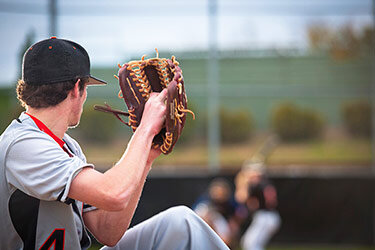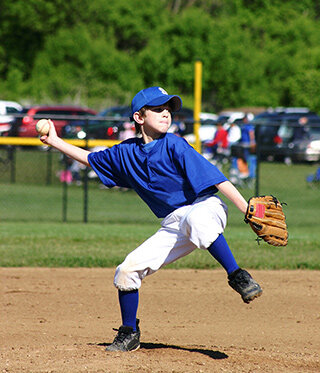Pitcher’s Elbow: Risk Factors And Prevention
One of the most common injuries pitchers experience is “Pitcher’s Elbow”, or medial epicondyle apophysitis.
Spring has arrived, and with it, the start of baseball. Baseball’s season is a long one. Practices and games are numerous, and the potential for injury (especially injury caused by overuse and repetitive motion) is high. This is particularly true for pitchers, who forcefully hurl balls at great speeds over and over, day after day. One of the most common injuries pitchers experience is “Pitcher’s Elbow”, or medial epicondyle apophysitis. This condition causes pain and swelling inside of the elbow, which in addition to hurting, can limit a pitcher’s range of motion.
There are a variety of risk factors that contribute to this condition. According to an article published by the American Physical Therapy Association:
The Following Risk Factors Contribute To Pitcher’s Elbow:
• Age - Young baseball players (particularly between the ages of 9 and 14) are at greater risk because their elbow joints (bones, growth plates, and ligaments) are not fully developed and are more susceptible to overuse injuries.
Young baseball players are at greater risk because their elbow joints are not fully developed.
• Pitching too many games - The number of games pitched should be carefully monitored and the league’s pitch count rules followed. Research has proven that overuse in baseball contributes to injuries such as Pitcher’s Elbow. If pain occurs before pitch count limit is reached, the player should stop immediately. Rotating pitchers within games is a good idea to ensure adequate rest is given to each pitcher.
• Curveballs and breaking pitches - Both of these types of pitches appear to put more stress on the growth plate than other pitches. These pitches should be limited, especially in players between the ages of 9 and 14.
• Improper mechanics - Improper throwing mechanics can put undue force on the elbow joint. Proper throwing mechanics can help a young player avoid unnecessary injury and develop proper technique that improves their game.
For injury prevention, our physical therapists can help with proper conditioning, technique, and identifying proper recovery time after each game.
If you or your child has an elbow injury from pitching, specific exercises can restore flexibility and strength. A rehabilitation program directed by a physical therapist will include a gradual return to throwing.
Don’t let injury sideline you this season. Contact our office today for an appointment.




